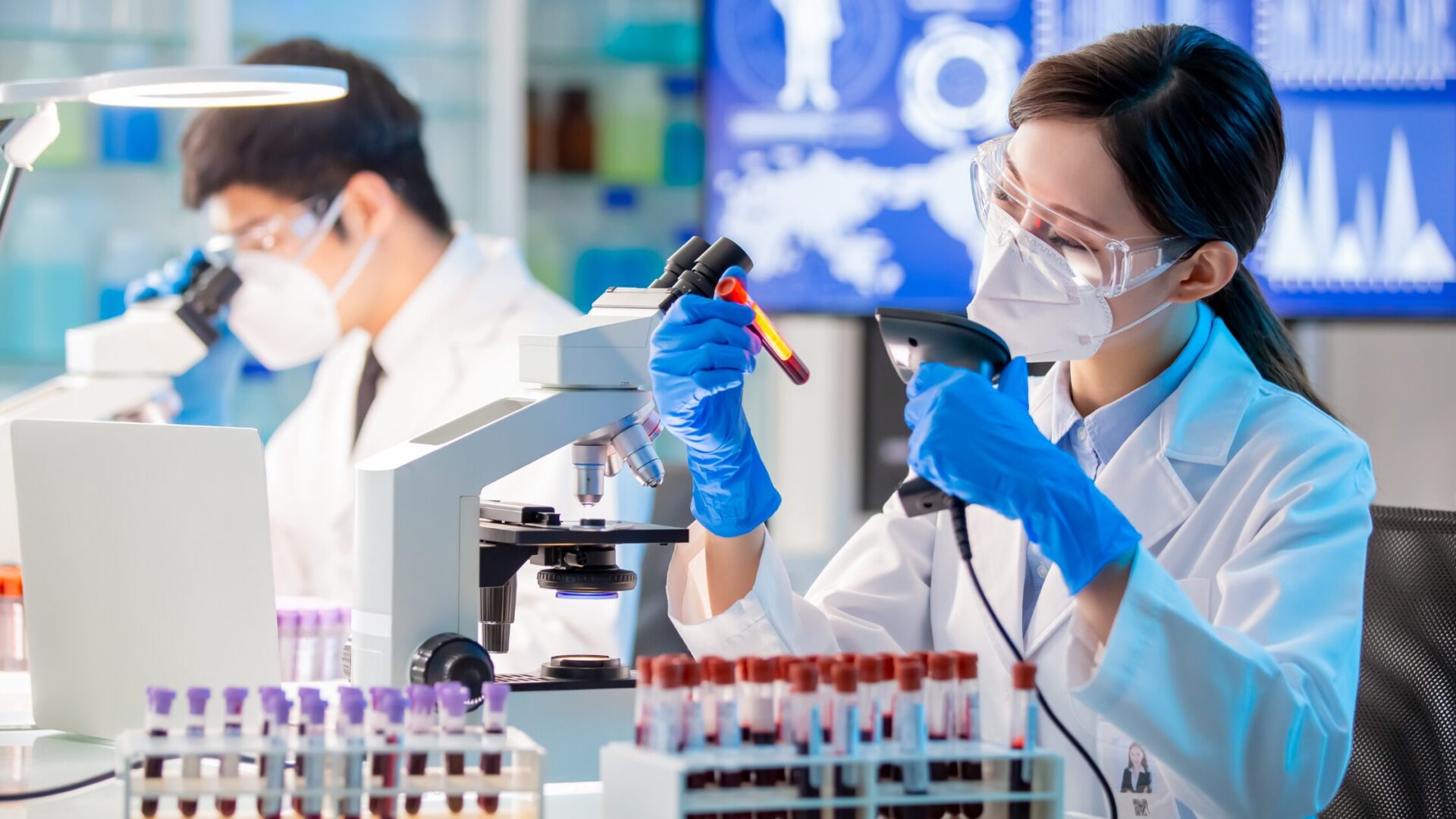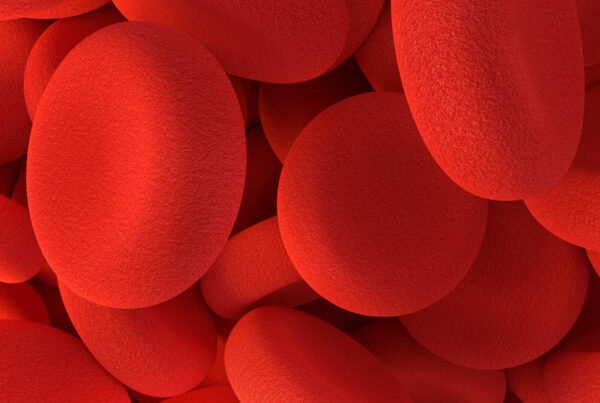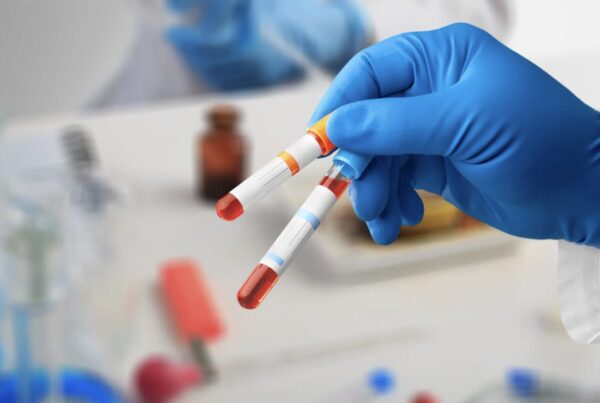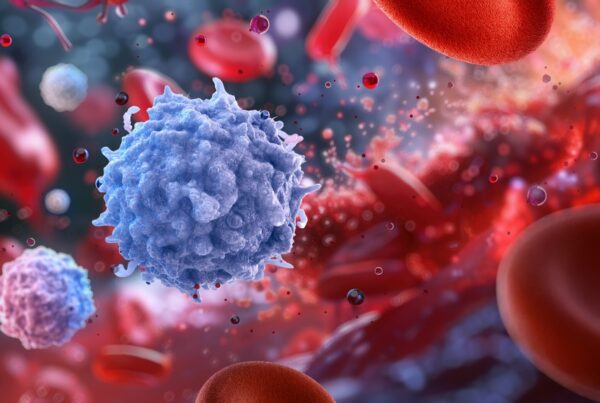A researcher’s guide to choosing the right anticoagulant for blood research, including PBMCs and plasma
Sourcing blood products for life science research can be daunting, especially when selecting the right anticoagulant for your study. Whether you’re working with PBMCs, plasma, serum, or whole blood, choosing the correct anticoagulant is crucial to avoid interference in assays and to preserve sample integrity.
What are anticoagulants and how do they work?
Anticoagulants prevent blood from clotting in two primary ways:
- Binding calcium ions – e.g., EDTA, citrate.
- Inhibiting thrombin activity – e.g., heparin.
The three most widely used anticoagulants are:
- Ethylenediaminetetraacetic acid (EDTA)
- Heparin
- Citrate
Potential interference of anticoagulants with analysis
While anticoagulants are essential in research, they can interfere with analytical methods or alter the concentrations of certain constituents in blood. Here are key considerations:
- Contamination with cations: For example, NH4+, Li+, Na+, and K+.
- Assay interference: Caused by the complexation of metals with EDTA and citrate, leading to:
- Inhibition of alkaline phosphatase and metalloproteinase activities.
- Binding of ionized calcium to heparin.
- Impact on fibrinogen: Can affect heterogeneous immunoassays.
- Inhibition of metabolic reactions: Heparin, for example, can inhibit Taq polymerase in PCR.
Can anticoagulants affect PCR assays?
Yes, particularly heparin-based anticoagulants, which can inhibit PCR analysis. To mitigate these effects, consider these precautions:
Simple PCR tests:
- Dilution of nucleic acids often resolves inhibition.
- For high-sensitivity PCR, isolate nucleated cells and wash them repeatedly in physiological buffers.
Highly sensitive RT-PCR:
- More advanced methods, such as lithium chloride treatment, effectively remove heparin without degrading RNA.
- Alternative techniques include Sephadex chromatography or heparinase treatment, but these can be costly and time-consuming.
Anticoagulant selection guide
The table below summarises the most common anticoagulants, their applications, advantages, and disadvantages:
|
Anticoagulant |
Best for |
Not recommended for |
Advantages |
Disadvantages |
|
K2EDTA / K3EDTA |
Haematology, donor screening, PBMC isolation |
Calcium/iron estimation, PCR |
Preserves RBC morphology, low hyperosmolar effect |
Can inhibit certain enzyme activities, diluted specimen (K3EDTA only) |
|
Lithium/sodium heparin |
Plasma determinations, pH and blood gas analysis |
PCR |
Minimal hemolysis, preserves RBC morphology |
Inhibits acid phosphatase, interferes with metabolic reactions |
|
Sodium citrate |
Coagulation studies, platelet function tests |
Calcium estimation |
Reversible anticoagulation, preserves coagulation factors |
Inhibits aminotransferase and alkaline phosphatase activities |
|
ACD-A |
PBMC preservation, DNA analysis |
Biochemical/metabolomics studies |
Prolongs shelf-life of blood (6–8 hours), stabilizes lymphocytes for LCL establishment |
Can impact biochemical assay results |
|
CPD |
PBMC preservation, red blood cell storage |
N/A |
Enhances ATP synthesis, isotonic for RBCs |
Limited compatibility with some analytical methods |
|
Fluoride/oxalate |
Glucose determinations, alcohol testing |
Enzymatic immunoassays, WBC morphology |
Preserves glucose concentrations |
Inhibits many enzymes, poorly preserves WBC morphology |
Serum vs. plasma for metabolomics studies
For metabolomics research, serum is often the preferred choice. Unlike plasma, serum avoids interference from anticoagulants, making it ideal for downstream applications such as:
- Immunoassays (ELISA, RIA).
- Serological diagnostics.
However, for some tests (e.g., ELISAs, immunoblots), both serum and plasma can be used interchangeably.
Considerations for gel separator tubes
While gel separator tubes are useful for rapid serum/plasma separation, studies show they may alter metabolite profiles, particularly for amino acids. To ensure accurate metabolomic analysis, avoid using gel separator tubes.
Ensuring quality for your research
At Research Donors, we provide high-quality blood products tailored to your research needs. Our extensive donor pool allows us to deliver diverse sample types, including whole blood, leukopaks, PBMCs, plasma, serum, and more.
- High standards: All samples are processed in an ISO-accredited, HTA-licensed facility under informed consent.
- Flexibility: Customise your sample requirements to suit your specific project.
Explore our selection of blood products and find the right sample type for your research. View our blood biospecimens to get started today!
References & further reading
- Betsou, F., Gaignaux, A., Ammerlaan, W., Norris, P.J. and Stone, M. (2019). Biospecimen Science of Blood for Peripheral Blood Mononuclear Cell (PBMC) Functional Applications. Current Pathobiology Reports, 7(2), pp.17–27. doi:https://doi.org/10.1007/s40139-019-00192-8.
- Bowen, R.A.R. and Remaley, A.T. (2014). Interferences from blood collection tube components on clinical chemistry assays. Biochemia Medica, 24(1), pp.31–44. doi:https://doi.org/10.11613/bm.2014.006.
- Caliezi, C., Reber, G., Lämmle, B., de Moerloose, P. and Wuillemin, W.A. (2000). Agreement of D-dimer results measured by a rapid ELISA (VIDAS) before and after storage during 24h or transportation of the original whole blood samples. Thrombosis and Haemostasis, [online] 83(1), pp.177–178. Available at: https://pubmed.ncbi.nlm.nih.gov/10669177/ [Accessed 29 May 2024].
- Chowdhury, F.R., Rodman, H. and Bleicher, S. (1971). Glycerol-like contamination of commercial blood sampling tubes. Journal of Lipid Research, [online] 12(1), p.116. Available at: https://pubmed.ncbi.nlm.nih.gov/5542696/#:~:text=Abstract [Accessed 29 May 2024].
- England, J.M., Rowan, R.M., van Assendelft, O.W., Bull, B.S., Coulter, W., Fujimoto, K., Groner, W., Richardson-Jones, A., Klee, G., Koepke, J.A., Lewis, S.M., McLaren, C.E., Shinton, N.K., Tatsumi, N. and Verwilghen, R.L. (1993). Recommendations of the International Council for Standardization in Haematology for Ethylenediaminetetraacetic Acid Anticoagulation of Blood for Blood Cell Counting and Sizing: International Council for Standardization in Haematology: Expert Panel on Cytometry. American Journal of Clinical Pathology, 100(4), pp.371–372. doi:https://doi.org/10.1093/ajcp/100.4.371.
- Ladenson, J.H., L. M.B. Tsai, Michael, J.M., Kessler, G. and J. Heinrich Joist (1974). Serum versus Heparinized Plasma for Eighteen Common Chemistry Tests: Is Serum the Appropriate Specimen? Am J Clinical Pathology, 62(4), pp.545–552. doi:https://doi.org/10.1093/ajcp/62.4.545.
- Leonard, P.J., Persaud, J. and Motwani, R. (1971). The estimation of plasma albumin by BCG RCG binding on the technicon SMA 12/60 analyser and a comparison with the HABA dye binding technique. Clinica Chimica Acta, 35(2), pp.409–412. doi:https://doi.org/10.1016/0009-8981(71)90214-2.
- Li, G., Cabanero, M., Wang, Z., Wang, H., Huang, T., Alexis, H., Eid, I., Muth, G. and Pincus, M.R. (2013). Comparison of glucose determinations on blood samples collected in three types of tubes. Annals of Clinical and Laboratory Science, [online] 43(3), pp.278–284. Available at: https://pubmed.ncbi.nlm.nih.gov/23884222/ [Accessed 29 May 2024].
- Meng, Q.H. and Krahn, J. (2008). Lithium heparinised blood-collection tubes give falsely low albumin results with an automated bromcresol green method in haemodialysis patients. Clinical Chemical Laboratory Medicine, 46(3). doi:https://doi.org/10.1515/cclm.2008.079.
- Narayanan, S. (2000). The Preanalytic Phase. American Journal of Clinical Pathology, 113(3), pp.429–452. doi:https://doi.org/10.1309/c0nm-q7r0-ll2e-b3uy.
- Neumaier, M., Braun, A. and Wagener, C. (1998). Fundamentals of quality assessment of molecular amplification methods in clinical diagnostics. International Federation of Clinical Chemistry Scientific Division Committee on Molecular Biology Techniques. Clinical Chemistry, [online] 44(1), pp.12–26. Available at: https://pubmed.ncbi.nlm.nih.gov/9550553/.
- Numata, Y., Dohi, K., Furukawa, A., Kikuoka, S., Asada, H., Fukunaga, T., Taniguchi, Y., Sasakura, K., Tsuji, T., Inouye, K., Yoshimura, M., Itoh, H., Mukoyama, M., Yasue, H. and Nakao, K. (1998). Immunoradiometric assay for the N-terminal fragment of proatrial natriuretic peptide in human plasma. Clinical Chemistry, [online] 44(5), pp.1008–1013. Available at: https://pubmed.ncbi.nlm.nih.gov/9590374/ [Accessed 29 May 2024].
- Peake, M.J., Bruns, D.E., Sacks, D.B. and Horvath, A.R. (2013). It’s Time for a Better Blood Collection Tube to Improve the Reliability of Glucose Results. Diabetes Care, [online] 36(1), pp.e2–e2. doi:https://doi.org/10.2337/dc12-1312.
- Pignatelli, P., Pulcinelli, F.M., Ciatti, F., M. Pesciotti, Ferroni, P. and Gazzaniga, P.P. (1996). Effects of storage on in vitro platelet responses: Comparison of ACD and Na citrate anticoagulated samples. Journal of clinical laboratory analysis, 10(3), pp.134–139. doi:https://doi.org/10.1002/(sici)1098-2825(1996)10:3%3C134::aid-jcla4%3E3.0.co;2-b.
- Rifai, N., Horvath, A.R. and Wittwer, C. (2018). Tietz textbook of clinical chemistry and molecular diagnostics. 6th ed. St. Louis, Missouri: Elsevier.
- Sevastos, N., Theodossiades, G., Efstathiou, S., Papatheodoridis, G.V., Manesis, E. and Archimandritis, A.J. (2006). Pseudohyperkalemia in serum: the phenomenon and its clinical magnitude. The Journal of Laboratory and Clinical Medicine, [online] 147(3), pp.139–144. doi:https://doi.org/10.1016/j.lab.2005.11.008.
- Sotelo-Orozco, J., Chen, S.-Y., Hertz-Picciotto, I. and Slupsky, C.M. (2021). A Comparison of Serum and Plasma Blood Collection Tubes for the Integration of Epidemiological and Metabolomics Data. Frontiers in Molecular Biosciences, 8. doi:https://doi.org/10.3389/fmolb.2021.682134.
- Tammen, H., Schulte, I., Hess, R., Menzel, C., Kellmann, M., Mohring, T. and Schulz-Knappe, P. (2005). Peptidomic analysis of human blood specimens: Comparison between plasma specimens and serum by differential peptide display. PROTEOMICS, 5(13), pp.3414–3422. doi:https://doi.org/10.1002/pmic.200401219.
- Tate, J. and Ward, G. (2004). Interferences in immunoassay. The Clinical biochemist. Reviews, [online] 25(2), pp.105–20. Available at: https://www.ncbi.nlm.nih.gov/pmc/articles/PMC1904417/#:~:text=Interference%20can%20lead%20to%20falsely.
- Technology, W.H.O.D.I. and L. (2002). Use of anticoagulants in diagnostic laboratory investigations. iris.who.int. [online] Available at: https://iris.who.int/handle/10665/65957.
- Toffaletti, J.G. and Wildermann, R.F. (2001). The effects of heparin anticoagulants and fill volume in blood gas syringes on ionized calcium and magnesium measurements. Clinica Chimica Acta, 304(1-2), pp.147–151. doi:https://doi.org/10.1016/s0009-8981(00)00412-5.
- Wallace, A.M. (2000). Measurement of leptin and leptin binding in the human circulation. Annals of Clinical Biochemistry: International Journal of Laboratory Medicine, 37(3), pp.244–252. doi:https://doi.org/10.1258/0004563001899311.
- Wild, D. (2013). The Immunoassay Handbook : Theory and Applications of Ligand binding, ELISA, and Related Techniques. 4th ed. Oxford ; Waltham, Ma: Elsevier.
- Wilkinson, B. and Golabek, R. (n.d.). Assembly and method to improve vacuum retention in evacuated specimen containers. [online] Available at: https://patents.google.com/patent/US20090162587A1/en [Accessed 29 May 2024].
- Wiseman, J.D. and National Committee For Clinical Laboratory Standards (1996). Evacuated tubes and additives for blood specimen collection : approved standard. 33rd ed. Wayne, Pa: Nccls.
- Zahraini, H., Indrasari, Y.N. and Kahar, H. (2021). Comparison of K2 and K3 EDTA Anticoagulant on Complete Blood Count and Erythrocyte Sedimentation Rate. INDONESIAN JOURNAL OF CLINICAL PATHOLOGY AND MEDICAL LABORATORY, 28(1), pp.75–79. doi:https://doi.org/10.24293/ijcpml.v28i1.1735.
- Zaninotto, M., Mion, M., Altinier, S., Forni, M. and Plebani, M. (2004). Quality specifications for biochemical markers of myocardial injury. Clinica Chimica Acta, 346(1), pp.65–72. doi:https://doi.org/10.1016/j.cccn.2004.02.035.






